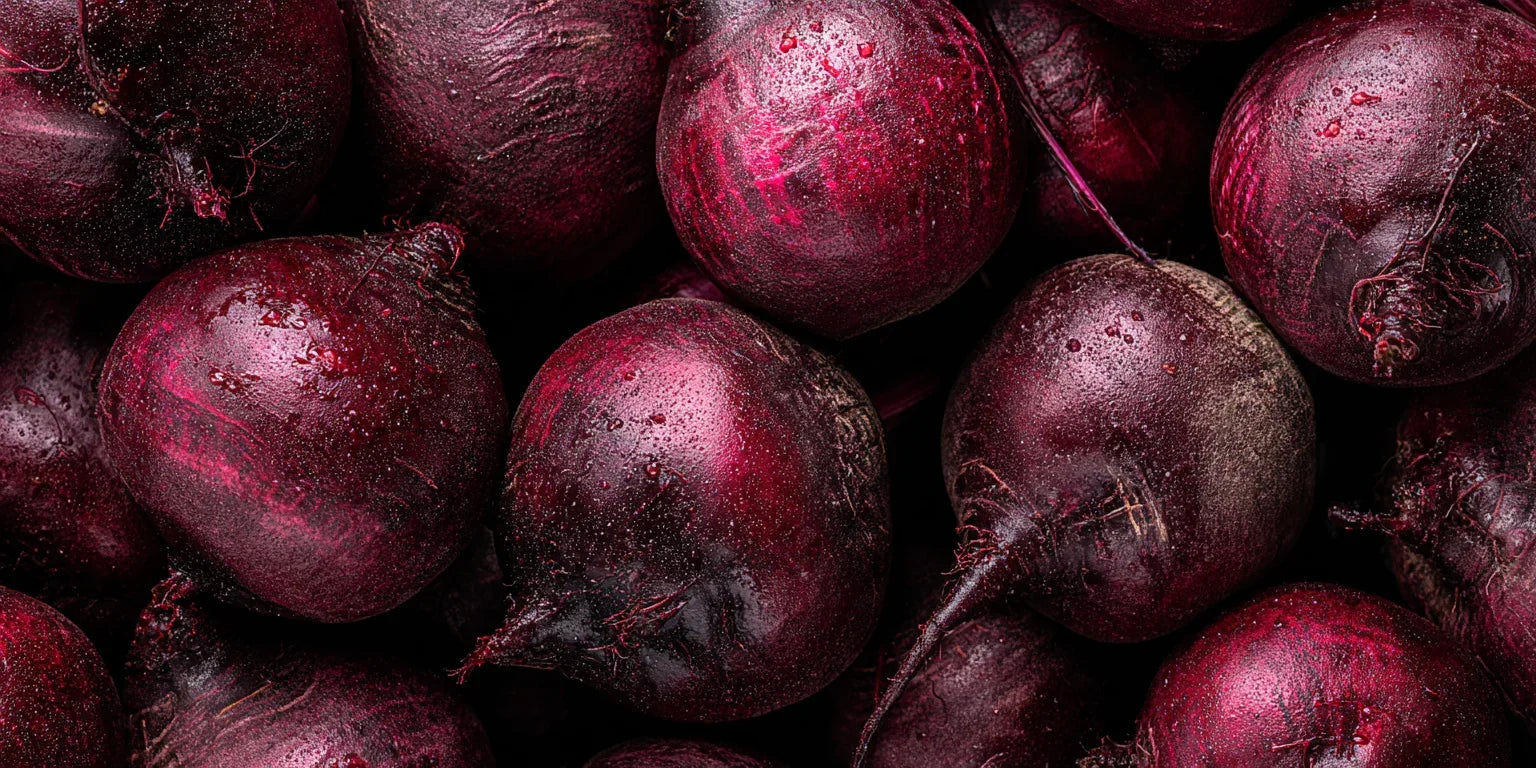
Beetroot Juice: Legal Doping for Athletes?
By Katarzyna Kurowska, Katarzyna Antosik, Milena Kobylińska, Agnieszka Decyk
Nitric oxide (NO) is a physiologically important signaling molecule that promotes the expansion of blood vessels and thus facilitates the transport of oxygen (O2) and energy substrates to the muscles. Research shows that nitric oxide (NO) also improves the effectiveness of mitochondrial respiration, which is manifested by reduced oxygen consumption during exercise. Until recently, it was thought that nitric oxide (NO) could only be formed as a result of the endogenous pathway of oxidative transformations L-arginine. Recent research results indicate, however, that an alternative to the endogenous pathway of nitric oxide (NO) formation may be the exogenous supply of inorganic nitrates (NO3-) with food. The aim of the study was to review the current literature on the properties of beetroot juice as an important source of nitrates (NO3-) and its effectiveness in improving the exercise capacity of physically active people. A systematic review of the research, published from 2005 to January 31, 2021, was made on the basis of searching bibliographic databases such as: PubMed, Elsevier and Web of Science. The following keywords were used: “beetroot”, “beetroot juice”, “nitrates”, “nitrites”, “nitric oxide”, “supplementation”, “ergogenic substances”, “sports nutrition”. Although there are conflicting data, it appears that beetroot juice supply may be a cheap, natural, and promising nutritional strategy for improving sports performance in both endurance and intermittent high intensity (start-stop) exercise. More detailed studies are analyzing the effect of dietary nitrate (NO3-) supply in anaerobic exercise - especially in high-volume resistance training - are needed. It is also emphasized that further research is needed to elucidate the effects of specific factors on the variability of ergogenic effects after beetroot juice consumption, which may be of the greatest importance in terms of the effectiveness of this nutritional intervention.
beetroot juice, ergogenic compounds, sports, nitrates, nitrites
The introduction of novel training stimuli allows athletes to achieve optimal performance during exercise (Campbell, Winiewski, 2017). It is increasingly observed that adaptations initiated by physical activity can be enhanced by appropriately selected nutritional strategies, which include guidelines for the type, quantity and timing of meals or fluids intake, and in specific situations, the use of supplements and sports nutrition (Jeukendrup, 2017). The aim of these strategies is, among other things, to cover individual energy needs taking into account the training periodization, to maintain carbohydrate availability especially during endurance exercise, to increase post-workout glycogen resynthesis, to regulate muscle protein synthesis and body water management (Belval et al., 2019; Thomas, Erdman, Burke, 2016; Vitale, Gatzin, 2019). According to the American College of Sports (ACSM), Academy of Nutrition and Dietetics (AND), and Dietitians of Canada (DC), proper adjustment of nutrient supply in relation to the exercise performed is essential for improved athletic performance (Thomas et al., 2016). Consequently, much of the current research, focuses on the effects of the intake of specific foods, including the use of isolated food ingredients and dietary supplements to improve not only health but also exercise capacity (Clements, Lee, Bloomer, 2014). Based on current research, the Australian Institute of Sport (AIS) has classified food ingredients and dietary supplements for athletes into four groups while determining whether they are safe, legal, and effective in improving excercise performance. In category A, which includes food ingredients and dietary supplements with proven effects on improving exercise capacity, the AIS included beetroot juice (Australian Institute of Sport [AIS], 2020; Maughan et al., 2018). Undoubtedly, its use has gained great popularity among physically active people in recent years and appears to be a cheap, natural and promising nutritional intervention for enhancing physical performance. The ergogenic effect induced by beetroot juice consumption is related to its high content of inorganic nitrates (NO3–), converted in the body to nitric oxide (NO), which is a physiologically important signaling molecule that dilates blood vessels and thus can increase blood flow to muscles, facilitating oxygen (O2) transport. In addition, studies have shown that nitric oxide (NO) improves the efficiency of mitochondrial respiration, so that the oxygen cost of exercise is significantly reduced (Dominguez et al., 2017). enhanced by appropriately selected nutritional strategies, which include guidelines for the type, quantity and timing of meals or fluids intake, and in specific situations, the use of supplements and sports nutrition (Jeukendrup, 2017). The aim of these strategies is, among other things, to cover individual energy needs taking into account the training periodization, to maintain carbohydrate availability especially during endurance exercise, to increase post-workout glycogen resynthesis, to regulate muscle protein synthesis and body water management (Belval et al., 2019; Thomas, Erdman, Burke, 2016; Vitale, Gatzin, 2019).
According to the American College of Sports (ACSM), Academy of Nutrition and Dietetics (AND), and Dietitians of Canada (DC), proper adjustment of nutrient supply in relation to the exercise performed is essential for improved athletic performance (Thomas et al., 2016). Consequently, much of the current research, focuses on the effects of the intake of specific foods, including the use of isolated food ingredients and dietary supplements to improve not only health but also exercise capacity (Clements, Lee, Bloomer, 2014). Based on current research, the Australian Institute of Sport (AIS) has classified food ingredients and dietary supplements for athletes into four groups while determining whether they are safe, legal, and effective in improving excercise performance. In category A, which includes food ingredients and dietary supplements with proven effects on improving exercise capacity, the AIS included beetroot juice (Australian Institute of Sport [AIS], 2020; Maughan et al., 2018). Undoubtedly, its use has gained great popularity among physically active people in recent years and appears to be a cheap, natural and promising nutritional intervention for enhancing physical performance.
The ergogenic effect induced by beetroot juice consumption is related to its high content of inorganic nitrates (NO3–), converted in the body to nitric oxide (NO), which is a physiologically important signaling molecule that dilates blood vessels and thus can increase blood flow to muscles, facilitating oxygen (O2) transport. In addition, studies have shown that nitric oxide (NO) improves the efficiency of mitochondrial respiration, so that the oxygen cost of exercise is significantly reduced (Dominguez et al., 2017).
The aim of the study was to review the current literature on the properties of beetroot juice as an important source of nitrates (NO3–) and its effectiveness in improving the exercise capacity of physically active people.
A systematic review of studies published from January 1, 2005 to January 31, 2021 was performed. For this purpose, bibliographic databases such as PubMed, Elsevier and Web of Science were searched. Keywords were used: “beetroot”, “beetroot juice”, “nitrates”, “nitrites”, “nitric oxide”, “supplementation”, “ergogenic substances”, “sports nutrition”. The information considered relevant was included in this review.

Beetroot juice is used as an ergogenic substance due to its high content of inorganic nitrate (NO3), which is the precursor for nitric oxide (NO) in the human body (Lundberg, Weitzberg, Gladwin, 2008). Until recently, it was thought that nitric oxide (NO) could only be formed by the endogenous pathway of oxidation of L-arginine, catalyzed by several isoforms of nitric oxide synthase (NOS), in the presence of molecular oxygen and such chemical reaction cofactors as NADPH, FAD, BH4 (Ignarro, Fukuto, Griscavage, Rogers, Byrns, 1993). However, recent findings indicate that an alternative to the endogenous pathway of nitric oxide (NO) formation, may be the exogenous supply of inorganic nitrate (NO3–) with food. This means that large amounts of nitrate (NO3–) present in beetroot juice are able to increase nitric oxide (NO) levels in the human body (Bailey et al., 2009; DeMartino, Kim-Shapiro, Patel, Gladwin, 2019). Other food products rich in inorganic nitrates (NO3–) include, among others green leafy vegetables, such as savoy cabbage, Chinese cabbage, endive, fennel, lettuce, spinach, rucoli, a well as vegetable and fruit juices, e.g. carrot juice or pomegranate juice, and drinking water. It is estimated that the content of nitrates in the aforementioned vegetables is in the case of with cabbage, Chinese cabbage, fennel and endive drom 500–2,500 mg (9–40 mmol)/1 kg of fresh vegetables, while in the case of lettuce, spinach, rucoli and beetroot (including beetroot juice) – 2,500 mg (40 mmol)/1 kg of fresh vegetables, respectively. It should be noted that the content of nitrates in plant product varies depending on their type and largely depends on environmental factors such as climate, soil conditions or the time elapsed from harvesting (Hord, Tang, Bryan, 2009; Santamaria, 2005). It should also be mentioned that the source of nitrates in the diet may be meat products in which nitrates are used as a preservative (Murphy, Eliot, Heuertz, Weiss, 2012). The average food intake of nitrates among adults in the United States, Europe and Australia is 60–120 mg/day (1–2 mmol/day). Based on the data obtained, it is estimated that vegetables are the main source of this compound in the diet of adults (80–85%). Researchers also suggest that vegetarians and people who follow nutritional models such as the DASH (Dietary Approaches to Stop Hypertension) diet are likely to achieve higher intakes of nitrates with food (AIS, 2020; Clements et al., 2014).
In the initiation of the exogenous pathway of “nitrate – nitrite – NO” metabolism, an important role is played by the oral microbiome, specifically, commensal, anaerobic bacteria residing in crypts distributed on the surface of the tongue, which degrade 25% of the nitrate (NO3–) ingested with food to nitrite (NO2–) via nitrate reductase enzymes (Qu, Wu, Pang, Jin, Qin, Wang, 2016). Subsequently, part of the nitrite (NO2–) is converted to nitric oxide (NO) in the stomach by a non-enzymatic mechanism that is dependent on low pH (Lundberg, Carlström, Larsen, Weitzberg,
2011), and the remainder is absorbed from the small intestine, from which it enters the systemic circulation, where it can be reduced to nitric oxide (NO) in the blood or in other body tissues, with the involvement of deoxyhemoglobin, among others, under conditions of low oxygen availability (hypoxia) (Lundberg et al, 2008). Importantly, researchers have observed that skeletal muscle probably contains the largest storage of nitrate (NO3–) in the body. Nitrate
(NO3–) stored in muscle tissue, under hypoxic and acidic conditions resulting from the accumulation of lactic acid accumulated during exercise, is used to produce nitrite (NO2–) and subsequently form nitric oxide (NO), which may explain the potential benefits for athletes in terms of improved exercise capacity (Piknova et al., 2015; Piknova, Park, Kwan, Lam, Schechter, 2016).
Nitric oxide (NO) is a physiologically relevant signaling molecule that has important hemodynamic and metabolic functions (Dominguez et al., 2018; Ferguson et al., 2013; Jones et al., 2021; Larsen, Weitzberg, Lundberg, Eklbom, 2007). Studies have shown that it plays an essential role in the regulation of blood flow and, more specifically, favors vasodilation (Furchgott, Jothianandan, 1991), resulting in increased transport of oxygen and, among others, energy substrates i.e. glucose and lipids to the muscles, thus supporting exercise performance and post-exercise recovery
speed (Puype, Ramaekers, Thienen, Deldicque, Hespel, 2015). Furthermore, nitric oxide (NO) has been found to induce gene expression, enhancing biogenesis and mitochondrial efficiency, through a cGMP – dependent mechanism, thus improving mitochondrial efficiency in skeletal muscle (Dejam, Hunter, Schechter, Gladwin, 2004; Pinna et al., 2014). These effects benefit from increased efficiency of oxidative metabolism, manifested by reduced oxygen consumption during exercise, or more productive phosphocreatine resynthesis (Ahluwalia et. al., 2016; Allen et al., 2010; Larsen et al., 2007; Larsen, Schiffer,
Weitzberg, Lundberg, 2012). The efficiency of mitochondrial oxidative phosphorylation is classically measured as the amount of oxygen consumed per amount of ATP produced, referred to as the P/O ratio (Hinkle, 2005). The research results indicate an improvement in the mitochondrial P/O ratio as a result of the exogenous supply of nitrates (NO3–). There are several possible interactions between nitrate (NO3–), nitrite (NO2–), nitric oxide (NO), and the mitochondrion. Perhaps the best characterized effect of NO is its binding to cytochrome C oxidase (COX) and the terminal electron acceptor in the electron transport system (ETS) (Brown, Cooper, 1994). Research results indicate that nitrates mechanically contribute to (NO3–) reduction in the expression of ATP/ADP translocator, a protein involved in proton conduction,
which has a profound impact on the basic function of mitochodndria in skeletal muscle (Larsen et al., 2011).

